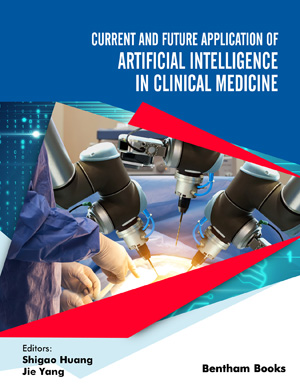[1]
Basile A, Carrafiello G, Ierardi AM, Tsetis D, Brountzos E. Quality-improvement guidelines for hepatic transarterial chemoembolization. Cardiovasc Intervent Radiol 2012; 35(4): 765-74.
[2]
Blackburn H, West S. Management of postembolization syndrome following hepatic transarterial chemoembolization for primary or metastatic liver cancer. Cancer Nurs 2016; 39(5): 1-18.
[3]
Xu L, Wang S, Zhuang L, et al. Decoction alleviated postembolization syndrome following transcatheter arterial chemoembolization for hepatocellular carcinoma: A randomized, double-blind, placebo-controlled trial. Integr Cancer Ther 2016; 15: 349-57.
[4]
Dhand S, Gupta R. Hepatic transcatheter arterial chemoembolization complicated by postembolization syndrome. Semin Intervent Radiol 2011; 28: 207-11.
[5]
Lu W, Li Y, He X, Chen Y. Transcatheter arterial chemoem- bolization for hepatocellular carcinoma in patients with cirrhosis: Evaluation of two kinds of dosages of anticancer drugs and analysis of prognostic factors. Hepatogastroenterology 2003; 50: 2079-83.
[6]
Saccheri S, Lovaria A, Sangiovanni A, et al. Segmental trans- catheter arterial chemoembolization treatment in patients with cirrhosis and inoperable hepatocellular carcinomas. J Vasc Interv Radiol 2002; 13: 995-9.
[7]
Llovet JM, Bruix J. Systematic review of randomized trials for unresectable hepatocellular carcinoma: Chemoembolization improves survival. Hepatology 2003; 37: 429-42.
[8]
Lima M, Dutra S, Veloso Gomes F, Bilhim T, Coimbra E. Risk factors for the development of postembolization syndrome after transarterial chemoembolization for hepatocellular carcinoma treatment. Acta Med Port 2018; 31: 22-9.
[9]
Mason MC, Massarweh NN, Salami A, Sultenfuss MA, Anaya DA. Post-embolization syndrome as an early predictor of overall survival after transarterial chemoembolization for hepatocellular carcinoma. HPB (Oxford) 2015; 17: 1137-44.
[10]
Yinglu F, Changquan L, Xiaofeng Z, Bai L, Dezeng Z, Zhe C. A new way: Alleviating postembolization syndrome following transcatheter arterial chemoembolization. J Altern Complement Med 2009; 15(2): 175-81.
[11]
Yang H, Seon J, Sung PS, et al. Dexamethasone prophylaxis to alleviate postembolization syndrome after transarterial chemoembolization for hepatocellular carcinoma: A randomized, double-blinded, placebo-controlled study. J Vasc Interv Radiol 2017; 28(11): 1503-11.
[12]
Siriwardana RC, Niriella MA, Dassanayake AS, et al. Factors affecting post-embolization fever and liver failure after trans-arterial chemo-embolization in a cohort without background infective hepatitis-a prospective analysis. BMC Gastroenterol 2015; 15(1): 96.
[13]
Pomoni M, Malagari K, Moschouris H, et al. Post embolization syndrome in doxorubicin eluting chemoembolization with DC Bead. Hepatogastroenterology 2012; 59: 115-6.
[14]
Leung DA, Goin JE, Sickles C, Raskay BJ, Soulen MC. Determinants of postembolization syndrome after hepatic chemoembolization. J Vasc Interv Radiol 2001; 12: 321-6.
[15]
Li CP, Chao Y, Chen LT, et al. Fever after transcatheter arterial chemoembolization for hepatocellular carcinoma: Incidence and risk factor analysis. Scand J Gastroenterol 2008; 43: 992-9.
[16]
Jun CH, Ki HS, Lee HK, et al. Clinical significance and risk factors of postembolization syndrome fever in patients with hepatocellular carcinoma. World J Gastroenterol 2013; 19: 284-9.
[17]
Kogut MJ, Chewning RH, Harris WP, Hippe DS, Padia SA. Postembolization syndrome after hepatic transarterial chemoembolization: Effect of prophylactic steroids on postprocedure medication requirements. J Vasc Interv Radiol 2013; 24: 326-31.
[18]
Sohara N, Takagi H, Abe T, et al. Nausea and vomiting induced by arterial chemo-embolization in patients with hepatocellular carcinoma and the antiemetic effect of ondansetron hydrochloride. Support Care Cancer 1999; 7: 84-8.
[19]
Ogasawara S, Chiba T, Ooka Y, et al. A randomized placebo-controlled trial of prophylactic dexamethasone for transcatheter arterial chemoembolization. Hepatology 2018; 67: 575-85.
[20]
Zhou B, Wang J, Yan Z, Shi P, Kan Z. Liver cancer: Effects, safety, and cost-effectiveness of controlled-release oxycodone for pain control after TACE. Radiology 2012; 262: 1014-21.
[21]
Lee SH, Hahn ST, Park SH. Intraarterial lidocaine administration for relief of pain resulting from transarterial chemoembolization of hepatocellular carcinoma: Its effectiveness and optimal timing of administration. Cardiovasc Intervent Radiol 2001; 24: 368-71.
[22]
Zeng K, Dong HJ, Chen HY, Chen Z, Li B, Zhou QH. Wrist-ankle acupuncture for pain after transcatheter arterial chemoembolization in patients with liver cancer: A randomized controlled trial. Am J Chin Med 2014; 42(02): 289-302.
[23]
Castells A, Bruix J, Ayuso C, et al. Transarterial embolization for hepatocellular carcinoma. Antibiotic prophylaxis and clinical meaning of postembolization fever. J Hepatol 1995; 22: 410-5.
[24]
Kallini JR, Gabr A, Thorlund K, et al. Comparison of the adverse event profile of TheraSphere with SIR-Spheres for the treatment of unresectable hepatocellular carcinoma: A systematic review. Cardiovasc Intervent Radiol 2017; 40: 1033-43.
[25]
Piscaglia F, Tovoli F, Pini P, Salvatore V. A new horizon in the prevention of the postembolization syndrome after transcatheter arterial chemoembolization for hepatocellular carcinoma. Hepatology 2018; 67(2): 467-9.
[26]
Lance C, McLennan G, Obuchowski N, et al. Comparative analysis of the safety and efficacy of transcatheter arterial chemoembolization and yttrium-90 radioembolization in patients with unresectable hepatocellular carcinoma. J Vasc Interv Radiol 2011; 22(12): 1697-705.
[27]
Gomes FV, Oliveira JA, Correia MT, et al. Chemoembolization of hepatocellular carcinoma with drug-eluting polyethylene glycol embolic agents: Single-center retrospective analysis in 302 patients. J Vasc Interv Radiol 2018; 29(6): 841-9.
















